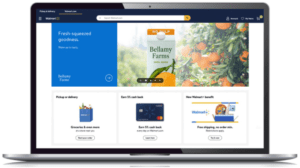
Programmatic advertising automates the buying and selling of ad inventory, giving brands the ability to purchase digital ads in real-time. That means that once a brand wins the bid for an ad placement, an ad can be served within milliseconds.
The advanced targeting capabilities offered by programmatic make it the most efficient way to buy digital ads across different marketplaces in the current advertising landscape.
How does programmatic advertising work across different open marketplaces and how do demand-side platforms (DSP) make it all possible? Read on to learn more.
How Programmatic Advertising Works Across Marketplaces
There are three components to programmatic advertising:
- Supply-side platform (SSP)
- Exchanges
- Demand-side platform (DSP)
The supply-side platform facilitates the sale of publisher inventory, pushing to the exchanges that provide access to inventory across an array of premium sites and apps. The SSP and DSP both push to the exchanges.
A crucial part of programmatic advertising is the demand-side platform, where brands and agencies go to buy the ad inventory.
Demand-Side Platform (DSP): An automated advertising platform that enables brands to programmatically bid on digital ad inventory in real-time.
The DSP is where brands go to bid on ad inventory and set up campaign parameters based on the programmatic campaign’s KPIs or other goals. From there, sophisticated audience targeting capabilities like time of day, demographics, and geolocation, as well as contextual targeting, interest targeting, and retargeting get layered in. Once the campaign is running, the only thing left to do is keep a close eye on campaign performance and progress in hitting KPIs.

Programmatic on Amazon, Walmart, & Other Marketplaces
Amazon
Amazon DSP allows brands to programmatically purchase display, video, and audio ads both on and off Amazon, empowered by Amazon shopper data to display your brand’s ads to highly relevant audiences who are most likely to convert. It also gives advertisers access to unique Amazon offerings like IMDb, Fire TV, Twitch, and more.
63% of media companies use Amazon for digital retail advertising.
Amazon DSP provides both self-service and managed-service options. Brands that want to retain full control over their programmatic campaigns can safely go self-service. To get access to Amazon DSP inventory plus consultative services, the managed-service option is the way to go.

Amazon DSP provides several metrics to help you measure the outcome of your brand’s programmatic campaigns:
- Retail insights: Compare activity before, during, and after your DSP campaign.
- Amazon campaign reporting: Measure how your campaigns impact customer behavior throughout each phase of the funnel.
- Third-party reporting solutions: Get omnichannel insights like brand lift and offline sales for a more enhanced understanding of your DSP campaign.
Walmart
For the first time ever, Walmart will get its own DSP this year. The first full-stack DSP built on the platform of leading global DSP solution The Trade Desk, Walmart’s DSP will already be very familiar to many advertisers once it’s released in the second half of 2021.

Walmart’s DSP won’t yet be able to offer the same advanced reporting capabilities as the Amazon DSP, but it will provide audience targeting options through both first-party data and third-party data from The Trade Desk.
Similar to how Amazon DSP uses Amazon customer data, Walmart’s DSP will give brands access to Walmart in-store and online shopping data to deliver personalized experiences to shoppers. Third-party data from The Trade Desk’s own DSP will also be available for even more granular ad targeting and ad inventory options.
35% of media companies are now putting budget toward digital retail advertising on Walmart. That’s up from just 25% in 2020.

But Wait, There’s More
With two of the biggest marketplaces in the US now offering their own DSPs, it comes as no surprise that other retailers are following suit. And with consumer privacy initiatives like cookie deprecation on the horizon, the first-party data retailers can get by having their own DSP is invaluable.
Even Kroger first introduced its DSP solution in 2018, boasting advanced targeting capabilities using customer data from its loyalty program, mobile app, in-store and online purchases.
CVS launched its programmatic ad network, the CVS Media Exchange (CMX), just last year.
The platform can be used to serve ads across channels like video, search, social, and banner ads in addition to in-store and other out-of-home displays.
CVS uses data from its loyalty program in addition to other purchase history and interest-based data to power CMX. Available as a managed service, CMX also offers reporting like ROI, sales lift, brand health, and customer acquisition.
While Target doesn’t yet have its own DSP, brands and retailers can connect their own DSP to Target’s customer data and advertise to segmented audiences. Target’s programmatic offerings live under Roundel, which centers itself on its verifiable first-party data from its loyalty app and in-store and online purchases, brand-safe ad inventory to make sure your brand isn’t seen next to anything considered inappropriate, and informative results measurement to show the ROAS of your campaign.
Next Steps?
Wherever you’re thinking about advertising programmatically, ROI’s experts are ready to help lead your brand down the path to profitable growth. Send us a message and one of our digital marketing experts will reach out to share answers, insights, and opportunities to put your brand on the path to profitable growth.
Sources
- Advertiser Perceptions. Digital Retail Advertising Set To Soar.




